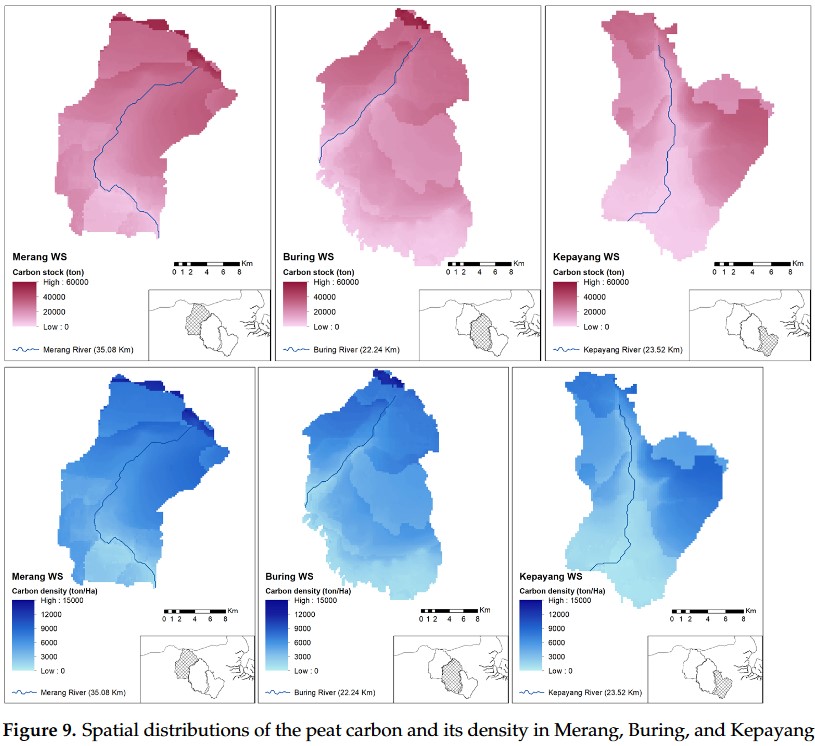
Special Issue Sustainability Journal: Emerging Voices on Tropical Peatland Conservation and Restoration
A recently published Special Issue Sustainability journal, "Tropical Peatland Conservation and Restoration: Sustainable and Climate-Smart Technology, Finance and Management Models", promotes emerging expert voices from Southeast Asia, Australasia, and the Amazonia region.
Tropical peatlands are critical ecosystems at both the global and the local levels, as they contain high concentrations of irrecoverable carbon, provide homes for unique biodiversity, and hold strong cultural and socioeconomic significance. However, they are increasingly exposed to human and climate change pressures.
This special issue aims to amplify the voices of academics and experts – particularly those working on the ground in tropical peatland countries – on a range of topics from carbon stocks and dynamics to fire management, plant propagation for rehabilitation, and management within multifunctional ‘scape approaches.
Underground carbon stocks in South Sumatra
Suharnoto, Setiawan, Pribadi, Muslihat, and Buchori estimate the underground carbon stock in South Sumatra, Indonesia, using grid-based spatial analysis related to land elevation, land use, and soil types (see image below). Ultimately, the paper provides guidance for prioritizing local-level conservation areas (and cultivation) based on carbon richness.
A new spatial peatland fire danger index
Suharnoto, Taufik, Setiawan, Buchori, and Dewantara propose a spatial peatland fire danger index using a coupled SWAT-MODFLOW model. The paper builds upon the accepted Keetch-Byran Drought Index to integrate peatland groundwater levels as a key variable for modeling peatland forest fire hazard reduction and management. Through application of threshold values to identify areas prone to peatland fire in South Sumatra, Indonesia, the paper aims to support improved fire management in restoration planning and implementation.
Peat accumulation in Amazonian soils
Crnobrna, Llanqui, Cardenas, and Pisco model the relationships between organic matter and bulk density in Amazonian peatland soils in Peru, to estimate peat accumulation (and/or decomposition). The study finds a negative power-law relationship between organic percentage and dry bulk density of Amazonian peat samples, which may help in prioritizing areas for management based on their carbon dynamics.
Exploring in vitro tree species propagation
Putri, Kartikawati, Nirsatmanto, Sunarti, Haryjanto, Herawan, Santosa, Wahyuningtyas, Lestari, and Rimbawanto explore the potential of in vitro multiplication as a cultivation method to overcome seed collection and production challenges for a relatively unexplored peatland ecosystem plant species (Lophostemon suaveolens), found in the Papua region of Indonesia. The authors propose further field-testing to confirm the potential of the protocol for propagation of the species for large-scale peatland rehabilitation works.
Sustainable management of tropical peatlands within a multifunctional ‘scape approach
Hiller and Fisher explore the multifunctional ‘scape approach for sustainable management of intact ecosystems. The authors assert that only transformative change can arrest and reverse nature loss. Through tropical peatland systems, the authors derive broader ecosystem management lessons, including the need for a deeper understanding of nature’s multidimensional ‘value’, strengthening of governance frameworks, empowering Indigenous peoples, aligning nature-positive and climate-positive goals, and mobilizing finance.
A showcase of cutting-edge research by emerging experts in the region, this special issue will help policymakers and other stakeholders translate science into improved management and financing for critical tropical peatland ecosystems.

Image: Spatial distributions of the peat carbon and its density in Merang, Buring, and Kepayang. In: Assessments of Underground Carbon Stocks in Merang-Kepahyang Peatlands, South Sumatra, Indonesia; credit: Yuli Suharnoto, Budi Indra Setiawan, Andik Pribadi, Lili Muslihat and Damayanti Buchori.